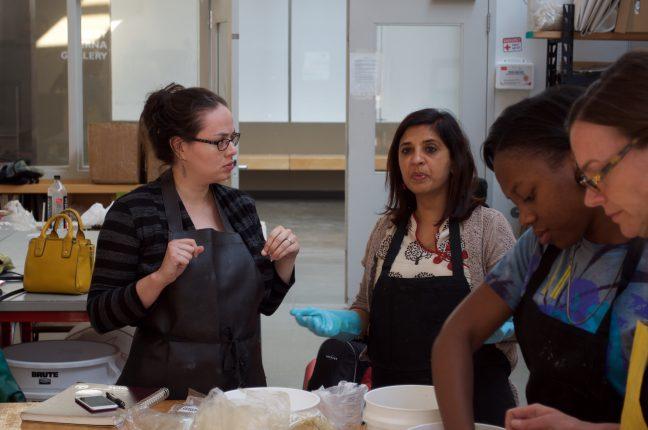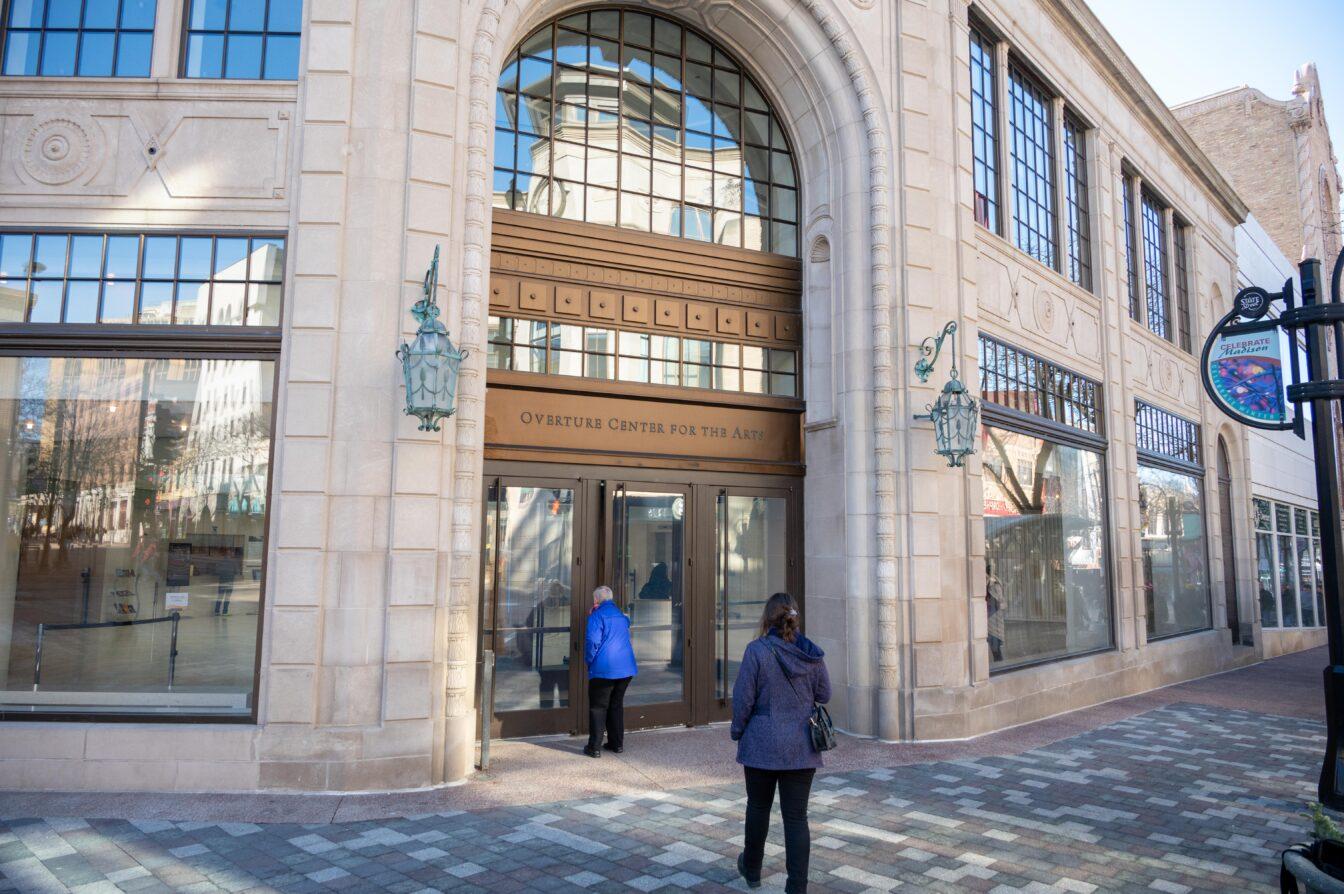The University of Wisconsin’s newest artist-in-residence is renowned not only for her textiles and prints, but for her ability to build communities.
Meeta Mastani is bringing her own extensive knowledge of design and print as well as an emphasis on community-building to UW’s 2016 fall semester Interdisciplinary Artist-in-Residence program.
In her residency, Mastani will teach a semester-long course, “Tactile Textiles – From 2D to 3D,” where she will guide students through the art and tradition of South Asian craft, along with participating in public lectures, performances and open workshops, the first of which took place this month.
Mastani’s class includes “people from different departments, and with different mediums,” which she believes will create a staggering amount of diversity, in turn creating an environment for boundless artistic growth. Her greatest goal for her class is to create an environment where she and her students can “learn and feed off of each other.”
Mastani is an internationally known artist, working extensively in community development and sustainability for the last 25 years. As an artist, she believes art and community are linked, and works towards helping marginalized communities through helping generate livelihoods and skill-building.
Mastani hopes to teach her students sustainability through “the balance of expression and usage.” One activity she completed with her class was to have her students bring in flowers or plants to incorporate into designs, to show that resourcefulness and limited materials can result in incredible projects— without having to buy copious amounts of materials and generate waste.
Her work towards community and sustainability can also be seen through the fair trade textile and craft business she co-founded, Bindaas Unlimited. The business has also provided an avenue for Mastani to spread her work internationally in a way that allows her to financially support herself, without having to compromise her unique style or methods.
“It’s almost like my own gallery on the streets,” Mastani said. “Because all over the world, everywhere I’ve gone, I’ve seen people wearing the work I make, including the t-shirts and the fabrics.”
Besides her Bindaas Unlimited artwork, Mastani’s work has recently been featured in the exhibition “The Fabric of India” at the Victoria and Albert Museum in London, and in the Indian magazine Marg “Cloth and India: 1947-2015.”
But while Mastani has had many accomplishments, she considers her greatest accomplishment to be the confidence her students gain in her classroom.
Likewise, Mastani’s contemporary style stems from her own confidence and experience in the field, along with her love for the aesthetic. Mastani gets inspiration for her works from her own life experiences and culture surrounding her.
“My fabrics are basically stories that I tell,” said Mastani. “Art makes you experience.”
Mastani believes that the environment in which she is working affects her artwork immensely, because she is inspired by and designs what she sees. Mastani believes art has brought much beauty to her life through its spontaneous and sometimes unexpected nature. She hopes to show her students “the product is not as important as the process.”
“Art is all about change,” said Mastani. “It is not just about ‘what is,’ and what we want it to be. It’s a process of flow, and not knowing.”








